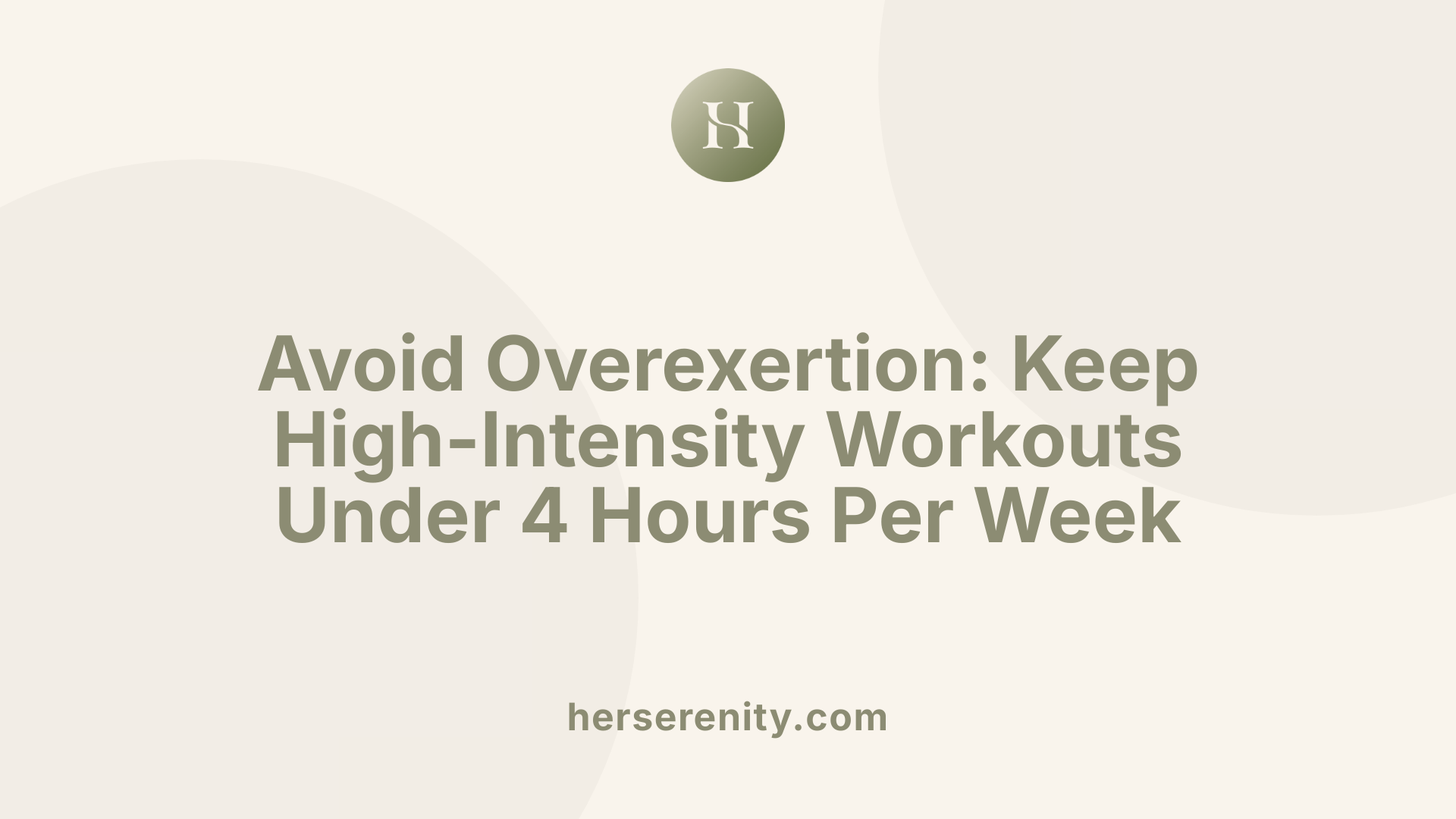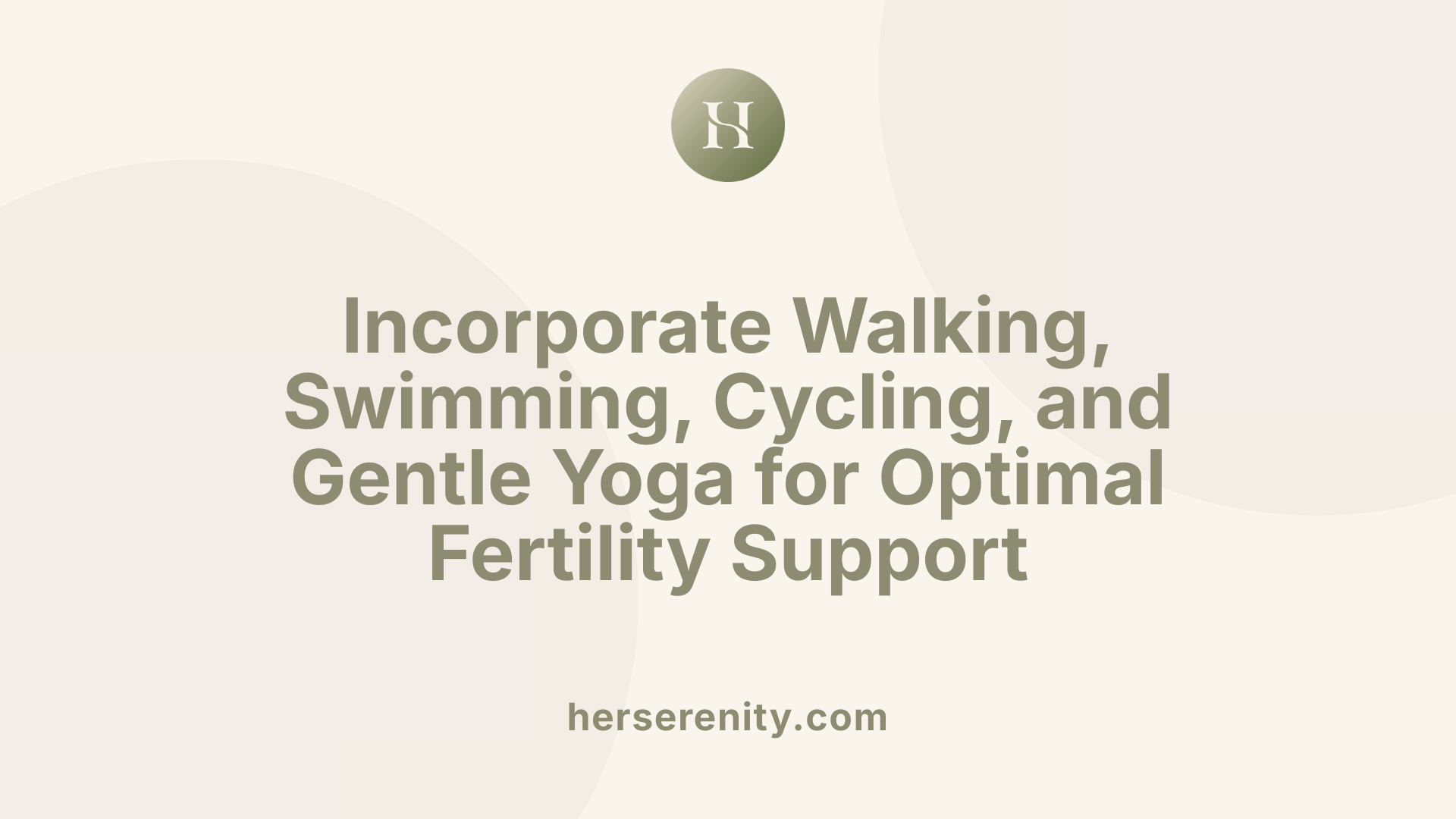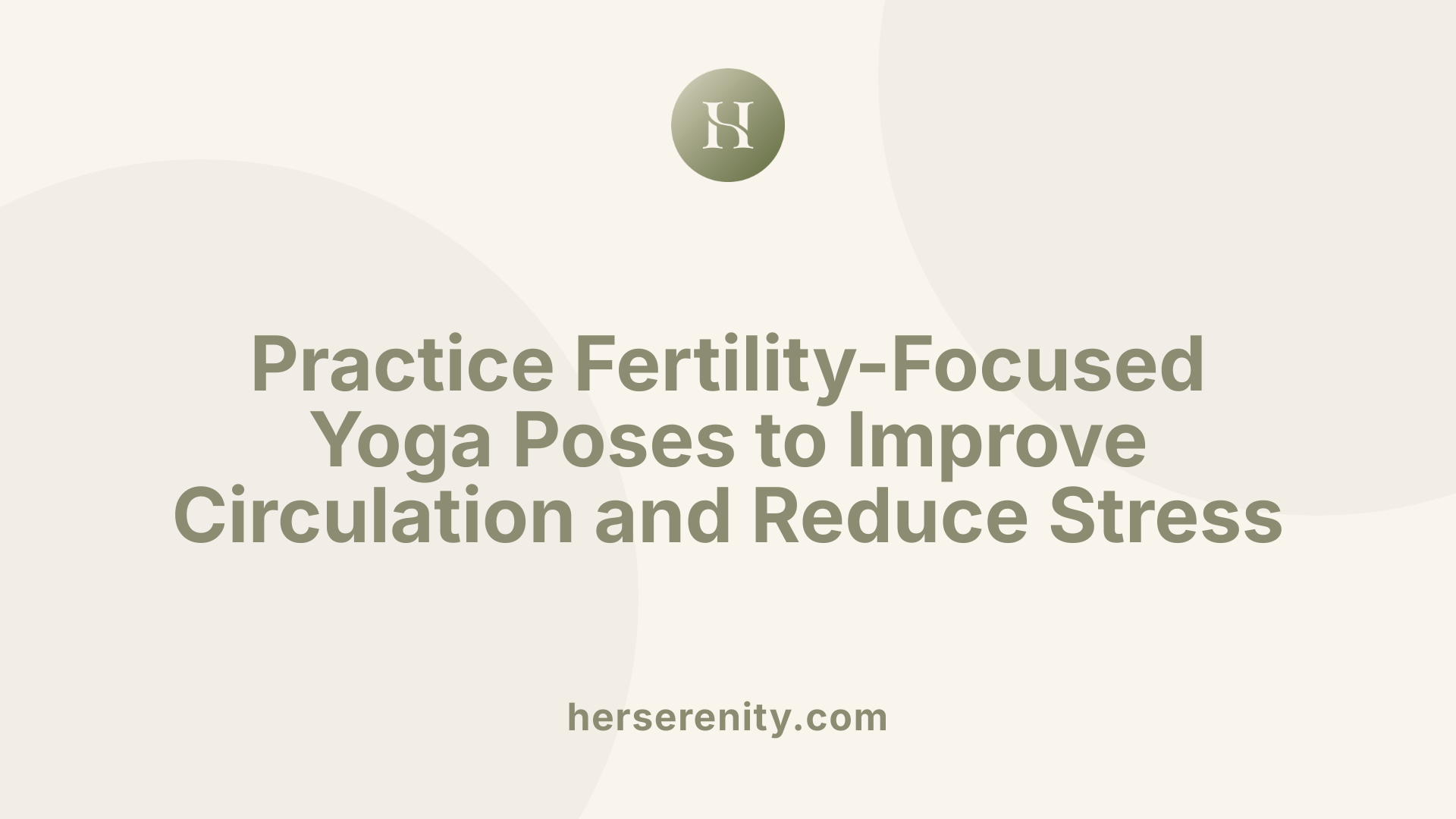Understanding the Connection Between Exercise and Fertility
Creating a fertility-boosting exercise plan involves understanding how physical activity influences reproductive health. While moderate exercise supports hormonal balance, reduces stress, and maintains a healthy weight—key factors in conception—extreme or high-intensity workouts can disrupt ovulation and reduce fertility. This narrative explores how to develop a balanced, safe, and effective workout routine tailored to enhance reproductive outcomes for women and men alike.
The Impact of Exercise on Reproductive Health
How exercise influences hormonal regulation and ovulation
Moderate physical activity plays a vital role in maintaining hormonal balance and supporting ovulation in women. By reducing cortisol levels and improving blood circulation to reproductive organs, exercise can help regulate estrogen and progesterone, which are crucial for regular menstrual cycles. Activities such as yoga, Pilates, swimming, and walking promote stress reduction and enhance flexibility, further aiding hormonal harmony.
The effects of weight on fertility and how exercise can help achieve optimal body weight
Maintaining a healthy body weight is essential for fertility, as being overweight or underweight can impair ovulation and hormonal balance. Regular exercise assists in achieving and maintaining a BMI between 19 and 25, which supports ovulation and conception. Activities like cycling, brisk walking, and resistance training can help women reach and sustain a healthy weight safely.
Benefits of blood circulation and stress reduction through physical activity
Physical activity improves blood flow to reproductive organs, offering benefits for both female and male fertility. Increased circulation enhances oxygen delivery and nutrient flow, bolstering reproductive health. Additionally, exercise reduces stress by increasing endorphin levels and lowering cortisol. This mental health boost can positively influence hormone levels, menstrual regularity, and sperm quality.
How does exercise impact fertility?
Exercise can influence fertility through several mechanisms. Moderate activity supports hormonal regulation, encourages a healthy weight, and improves blood flow, all of which are beneficial for conception. For women with conditions like PCOS, engaging in activities such as vigorous aerobic sessions or resistance training multiple times per week can enhance fertility without leading to overtraining. Conversely, excessive intense workouts, like long-distance running or heavy weightlifting, may disrupt menstrual cycles and decrease fertility prospects. Men benefit from regular movement that sustains a healthy weight and optimizes sperm quality.
Expert guidelines recommend around 150 minutes of moderate exercise weekly, including activities like walking, swimming, yoga, or strength training. Avoiding overexertion, warming up properly, and staying hydrated are crucial for maximizing benefits while preventing injury or hormonal disruption. Moderate activity reduces stress, supports weight management, and fosters a balanced hormonal environment, all essential factors for enhancing fertility and supporting successful conception.
Recommended Exercise Quantity for Fertility Enhancement
 For women trying to boost their chances of conception, staying active with moderate exercise is highly beneficial. Experts generally suggest engaging in around 150 minutes of physical activity per week, such as brisk walking, swimming, cycling, dancing, or yoga. These activities raise the heart rate, increase breathing, and help improve blood flow to reproductive organs, supporting overall fertility.
For women trying to boost their chances of conception, staying active with moderate exercise is highly beneficial. Experts generally suggest engaging in around 150 minutes of physical activity per week, such as brisk walking, swimming, cycling, dancing, or yoga. These activities raise the heart rate, increase breathing, and help improve blood flow to reproductive organs, supporting overall fertility.
It’s important to find a balance: while moderate exercise is safe and advantageous, overexerting can have the opposite effect. Exercising more than five hours weekly, particularly intense types like marathon running or vigorous weightlifting, can interfere with hormonal balance and ovulation. For women undergoing fertility treatments like IVF, reducing exercise intensity is often advised to prevent complications such as ovarian torsion or hormonal disruptions.
Special considerations apply for women with polycystic ovary syndrome (PCOS). Engaging in vigorous aerobic or resistance training exercises can improve insulin sensitivity and promote ovulation, thereby increasing the likelihood of conception. However, these women should also monitor caloric intake to avoid excessive weight loss or hormonal imbalances.
In summary, the goal should be consistent, moderate activity tailored to the individual, ideally involving less than four hours of high-intensity workouts weekly. Always consult healthcare providers to customize exercise routines during fertility efforts, ensuring they support health without overtaxing the body.
Types of Fertility-Enhancing Exercises

What types of exercises are beneficial for improving fertility?
Engaging in moderate, low-impact physical activities is highly recommended for women and men trying to conceive. These exercises help improve blood circulation, reduce stress, and support hormone regulation, all of which are essential for fertility.
Ideal options include walking, swimming, cycling, yoga, Pilates, and dance-based workouts. These activities are gentle on the body but effective in promoting overall reproductive health. For example, walking outdoors not only boosts circulation but also encourages mental well-being through exposure to natural environments.
Yoga and Pilates are especially valuable because they emphasize relaxation, flexibility, and improved blood flow to pelvic and reproductive organs. Specific yoga poses—such as Legs Up the Wall, Reclining Bound Angle, and Bridge—are tailored to enhance circulation and reduce stress, creating a favorable environment for conception.
Resistance and pelvic floor exercises, like Kegel exercises, can strengthen the muscles supporting reproductive organs, facilitating better blood flow and hormone function.
Studies suggest that regular moderate activity, roughly 150 minutes per week, effectively balances hormone levels and improves menstrual cycle regularity. For women with conditions like PCOS, higher-intensity workouts such as vigorous aerobic exercise or resistance training may provide additional benefits, especially for insulin sensitivity.
However, it’s crucial to avoid overly strenuous or high-impact workouts—like long-distance running or intense weightlifting—as they might disrupt hormonal balance, suppress ovulation, or cause cycle irregularities.
To optimize fertility, individuals should tailor their exercise routines to their unique needs, incorporating activities they enjoy to promote consistency. Combining moderate activity with stress reduction techniques enhances the chances of conception and prepares the body for pregnancy.
In essence, maintaining a balanced exercise program that prioritizes low-impact, stress-relieving, and circulation-boosting activities can significantly support reproductive health and improve fertility outcomes.
Designing a Safe and Effective Fertility-Boosting Routine
Creating an exercise plan that supports fertility involves balancing activity, intensity, and proper technique. Focus on incorporating aerobic, resistance, and flexibility exercises to enhance blood flow, hormone regulation, and stress management.
For aerobic activity, aim for around 150 minutes of moderate exercise each week. Walks, swimming, yoga, and Pilates are excellent options that raise the heart rate without overtaxing the body. These activities help improve circulation to reproductive organs and reduce stress hormones like cortisol.
Resistance training, such as light weight lifting or resistance bands, can strengthen muscles and support pelvic health. Include these exercises a couple of times weekly, ensuring they are moderate in intensity. Flexibility exercises, especially yoga and stretching routines, help relax the body, improve posture, and promote hormonal balance.
When planning your routine, pay attention to exercise intensity and duration. Use tools like the Borg Rating of Perceived Exertion scale or the talk test—if you can hold a conversation comfortably, the activity is likely moderate. Avoid exceeding four hours of high-impact or vigorous exercise weekly, as overdoing it may disrupt ovulation and impair fertility.
Progress gradually by warming up for 5-10 minutes before exercise and cooling down afterward. Proper warm-up increases blood flow and reduces the risk of injury, while stretching during cool-down helps maintain flexibility.
Hydration is crucial—drink at least 24 ounces of water per hour during moderate workouts, and adjust based on climate and exertion levels. Timing your exercise during different menstrual cycle phases can also optimize benefits; gentler activities during menstruation and increased activity during the follicular phase are recommended.
Finally, consult with healthcare providers or fertility specialists to customize your routine based on your health and treatment plans. Moderate consistency, attention to intensity, and mindful progression can significantly support your fertility journey.
The Role of Yoga and Mind-Body Practices

Are there specific exercises or routines, such as yoga, that can help enhance fertility?
Yes, engaging in specific exercises like yoga can significantly support fertility by promoting relaxation, improving blood circulation, and increasing flexibility around the pelvic and reproductive areas. Yoga encourages stress reduction, which is crucial since high cortisol levels can interfere with hormonal balance and ovulation.
Certain yoga poses are particularly beneficial for enhancing reproductive health. Poses such as Legs-Up-The-Wall (Viparita Karani), Reclining Bound Angle (Supta Baddha Konasana), and Bridge Pose (Setu Bandha Sarvangasana) are recommended. These postures help stimulate reproductive organs, increase pelvic blood flow, and foster a sense of calm.
In addition to these specific poses, gentle stretching and restorative yoga routines can help manage emotional stress and aid in hormonal balancing. Regular practice, even for a short duration daily, can improve ovarian function, support menstrual regularity, and alleviate stress levels.
For those seeking targeted support, fertility-focused yoga classes and coaching are available. These sessions are designed to combine physical postures, breathing techniques, and meditation practices tailored to enhance reproductive health.
Evidence supports that consistent yoga practice may lead to better hormonal regulation, improved ovarian response, and positive semen parameters in men. Overall, yoga acts as a calming tool and physical therapy to bolster the body’s readiness for conception, making it a valuable addition to fertility routines.
Lifestyle Factors and Additional Support Strategies
What lifestyle considerations should I keep in mind to maximize the impact of exercise on fertility?
Optimizing fertility involves more than just physical activity. To truly support reproductive health, aim for a balanced lifestyle that complements your exercise routine.
First, maintaining a healthy body weight is crucial. A BMI between 18.5 and 24.9 helps regulate hormones and promote regular ovulation. Both overweight and underweight conditions can impair fertility, so exercising to achieve or sustain a healthy weight is beneficial.
Diet plays a significant role. Consuming at least three servings of vegetables and 2-3 servings of fruit daily provides antioxidants that reduce free radical damage to eggs. Incorporating a diet with about 25% protein and 40% or fewer carbohydrates can improve pregnancy rates, especially for women with PCOS or outside the normal BMI range.
Omega-3 fatty acids support egg quality and embryo development. Prioritize foods rich in omega-3s like salmon, sardines, walnuts, and flaxseed, while reducing omega-6 sources like soybean, corn, and sunflower oils.
Avoid harmful substances that can compromise fertility. Quitting smoking and limiting alcohol intake are essential, as they significantly decrease miscarriage risks and improve hormone balance. Also, consider reducing caffeine consumption and avoiding processed meats, opting for lean, unprocessed proteins such as chicken, turkey, and fish.
Supplementation can boost reproductive health. Prenatal vitamins containing folic acid, calcium, iron, and vitamins D, C, A, E, alongside zinc and copper, support egg and sperm quality. Additional supplements like melatonin, Coenzyme Q10, and fish oil (EPA/DHA) are also beneficial.
Managing stress is vital. Exercise reduces cortisol levels and improves mood, but incorporating stress-reduction practices like yoga, meditation, or tai chi can further enhance mental well-being.
Finally, limit exposure to environmental toxins by choosing organic produce when possible, avoiding plastics that leach harmful chemicals, and ensuring good indoor air quality.
By combining balanced exercise, proper nutrition, lifestyle modifications, and stress management, you can create a fertile environment that maximizes your chances of conception.
Achieving Fertility Goals Through Mindful Exercise
Creating a fertility-boosting exercise plan involves balancing moderate physical activity with proper timing, variety, and lifestyle support. Incorporate different types of low-impact exercises like walking, yoga, swimming, and resistance training, while avoiding overexertion and high-impact workouts. Regular routines that align with menstrual cycle phases can optimize hormonal balance and ovulation. Prioritizing stress reduction, healthy nutrition, and avoiding harmful substances enhance exercise benefits. Always consult healthcare providers to tailor a plan suited to individual needs, ensuring sustainable practices that support conception and overall well-being. A thoughtful, consistent approach to exercise can significantly improve reproductive health and increase the likelihood of conception.
References
- The Best Exercises for Improving Fertility | - LA IVF Clinic
- Fertility nutrition & fitness plan
- Top 5 Recommended Exercises for Improving Fertility
- A Science-Based Guide to Boosting Fertility with Exercise
- Exercising and Being Active When Trying to conceive | Tommy's
- 12 Yoga Moves That Will Help You Conceive - Fertility - The Bump
- The effect of physical activity on fertility: a mini-review - PMC





